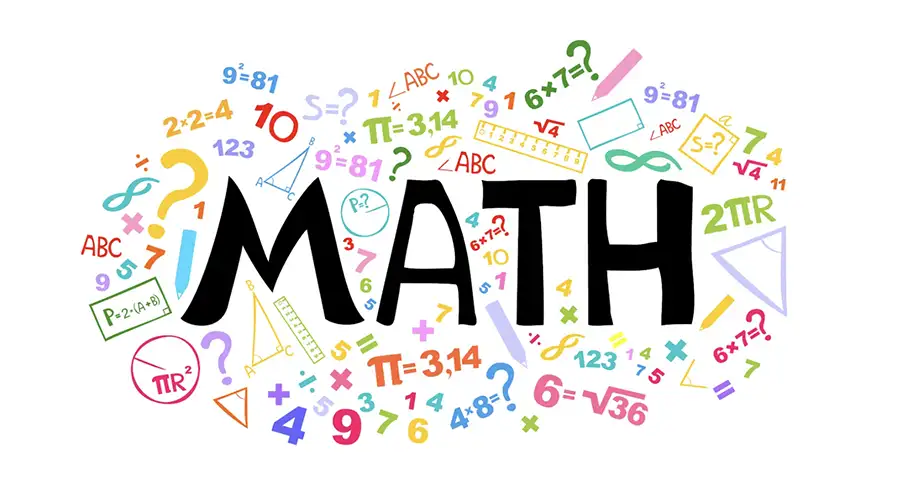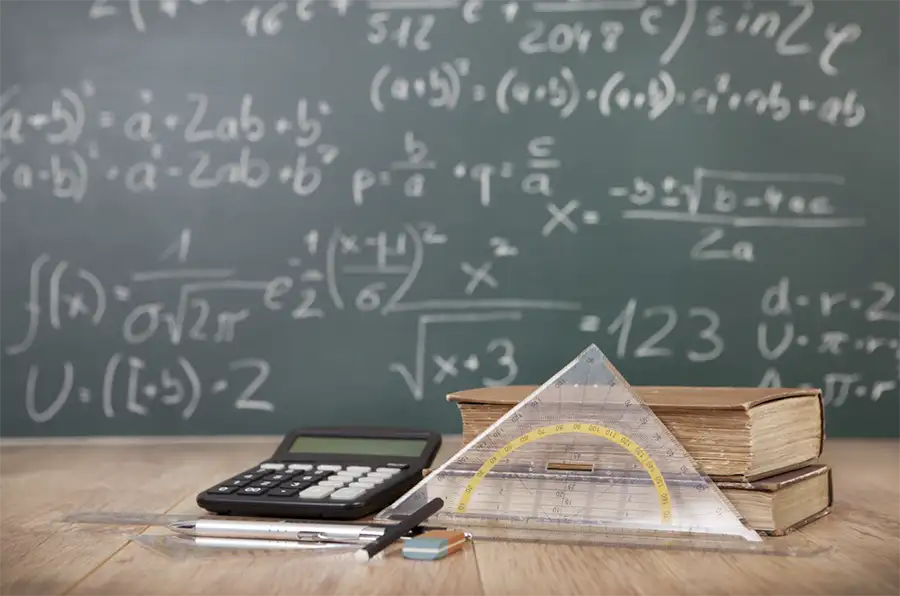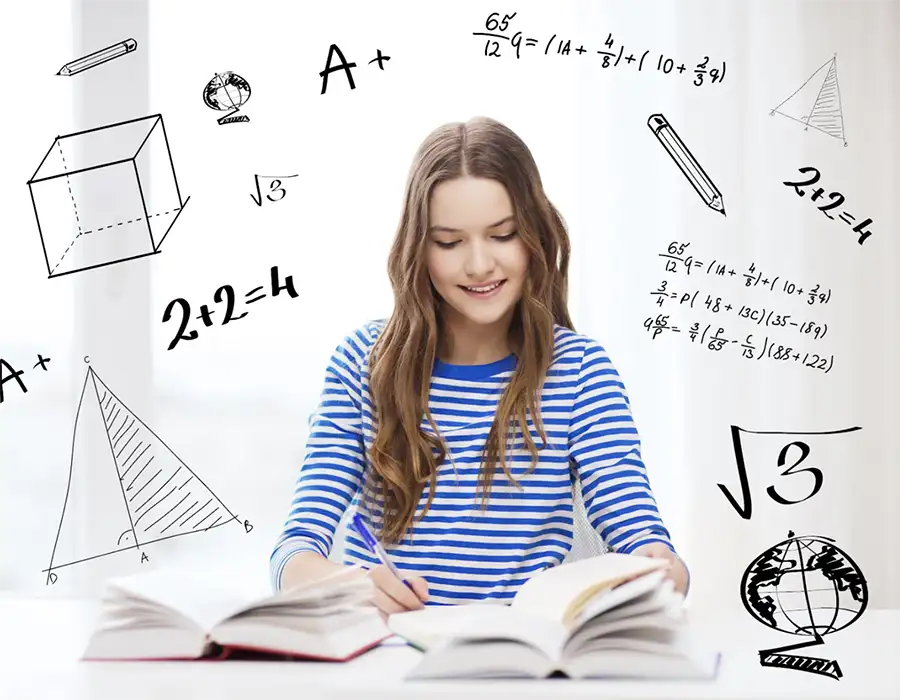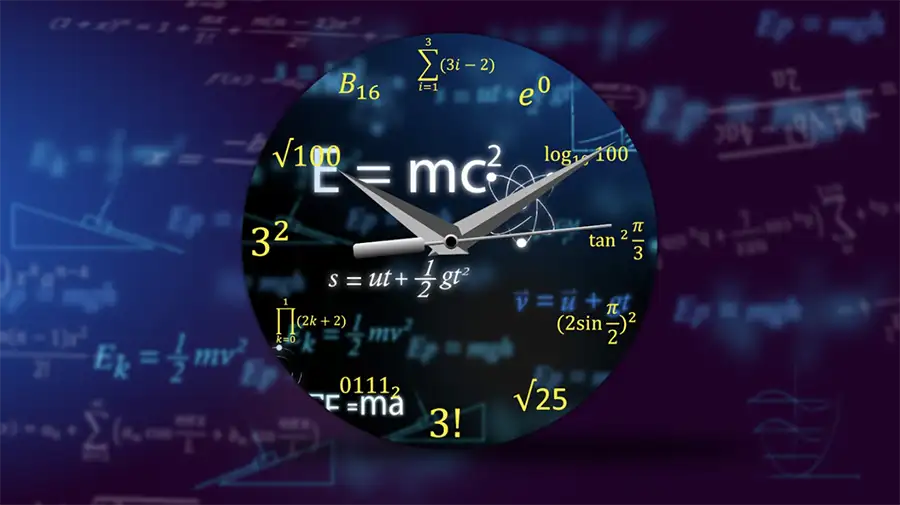I'M TRYING TO LOVE MATH
Expanding Mathematics Across the Curriculum
Introduction | Background Knowledge | Activities | Extensions | Standards

Introduction
Mathematics is many things. For the youngest learners, math is counting and patterns. Math is shapes and calculations. Math is concrete and abstract. It can be used to plan and build a garden or to send astronauts into space. Mathematical concepts are steadfast but ever-changing. We use mathematics in shopping and computer science. It is a universal language that is learned and studied all over the world.

Background Knowledge
It is generally believed that mathematics began with counting. A bone was found in the Democratic Republic of the Congo that shows notches that scientists believe were used for counting. From the Upper Paleolithic era, this Ishango Bone is thought to be 20,000 years old.
As civilization evolved and advanced, so did mathematics. For example, ancient Mesopotamians used stone counters in 3,000 BCE to represent quantities of grain and other goods. Other stone counters showed a base-60 number system and represented multiplication.
As the ancient world moved into the Bronze Age, Babylonians and Egyptians represented mathematics in a variety of ways. The Babylonians used clay tablets to record elements of geometry, including shapes and formulas, to calculate area. In tomb paintings, hieroglyphics and paintings show Egyptians engaged in calculations. The Rhind Papyrus contains numerous calculations and may have been used as a textbook for other scribes.
The great Greek scholars began learning more about mathematics between 500 and 200 BCE. During this time, some of the greatest minds explored mathematics and began to write about it. Pythagoras proved the Pythagorean Theory. Plato and Aristotle began to add mathematical concepts to their writings and teachings. Euclid, known as the "Father of Geometry," defined the axioms of geometry and proved many theories of geometry and number sense. Archimedes is considered the greatest mathematician of all time. He discovered concepts of calculus and furthered the studies of geometry.
The first known and documented female mathematician worked in about 400 CE. Hypatia lived in Alexandria and was a mathematician and scientist. She constructed but did not invent astrolabes and hydrometers used in astronomy. She is believed to have edited one of Ptolemy's writings. Her legacy is as a teacher and commentator in the field of mathematics.
Middle Eastern mathematicians dominated the following 600 - 800 years. Muhammad Al-Khwarizmi, of Persia, is known as the "Father of Algebra" and had the term "algorithm" named after him. Hasan Ibn al-Haytham studied the link between geometry and algebra. The Dresden Codex, the written Mayan number code, also came from this time.
In the 1200 and 1300s, Chinese mathematicians published many works. The Siyuan Yujian was four different titles and showed solutions for 288 individual math problems. Yang Hui wrote about what is widely known as Pascal's Triangle 300 years before Pascal in Europe. During this time, Leonardo Pisano, also known as Fibonacci, helped to bring Arabic numerals into wider use. He also observed patterns in nature that became the Fibonacci sequence.
From the Renaissance through the Enlightenment, great minds such as Leonardo DaVinci and Sir Issac Newton made advancements in mathematics. Modern mathematicians include Alan Turing, known as the "Father of Computer Science," and Julia Robinson, the first female president of the American Mathematical Society. Katherine Johnson, a Presidential Medal of Honor, worked at a segregated NASA and helped send American astronauts to space. Terence Taom was the youngest winner of the International Mathematics Olympiad at age 13. Modern mathematicians are creating mathematical theory as technology advances as well as proving and expanding upon existing mathematical theory.

ACTIVITIES
-
Selected List of Picture Books
- I'm Trying to Love Math by Bethany Barton (ISBN 978-0451480903) - The author uses humor to show all the ways math is used worldwide.
- The World is Not a Rectangle by Jeanette Winter (ISBN 978-1481446693) - Zaha Hadid overcame many obstacles as a Muslim woman in Baghdad, Iraq, to become a world-famous architect.
- Grace Hopper: Queen of Computer Code by Laurie Wallmark (ISBN 978-1454920007) - Grace Hopper used critical thinking and a pocket mirror to debug a US Navy Computer. She developed a simplified computer code and was a trailblazer in the Navy and computer fields.
- Blockhead: The Life of Fibonacci by Joseph D'Agnese (ISBN 978-0805063059) - Leonardo Fibonacci was a daydreamer who was always thinking about numbers. As he traveled the world as an adult, he noticed that many things in nature followed the same pattern, now known as the Fibonacci Sequence.
- Math Curse by Jon Scieszka (ISBN 978-0670861941) - You can think of anything as a math problem. Jon Scieszka and Lane Smith present a book where everything is a math problem - from the logical to the far-fetched and the main character must solve them all to escape the Math Curse.
- Infinity and Me by Kate Hosford (ISBN 978-0761367260) - Uma considers the concept of infinity as she meets people throughout the day while she is wearing her new red shoes.
- Zero, Zilch, Nada: Counting to None by Wendy Ulmer (ISBN 978-1585364619) - Harry starts his job at the balloon factory filling one hundred balloons for a party. With help from his friends, he practices counting by 10s, 5s, 2s, and 1s until he realizes he has no balloons left.
- Explore book lists that suggest titles for various strands of math, like this one from DREME out of Stanford.
-
Read about the women who were pioneers in the field of mathematics:
-
Sophie Kowalevski was born in Russia in 1850. She was the first woman to earn a Doctorate in Mathematics. She became a math professor and was a leader in the field of partial differential mathematics (PDEs.)
- Nothing Stopped Sophie by Cheryl Bardoe (ISBN 978-0316278201)
- Numbers in Motion: Sophie Kowalevski, Queen of Mathematics by Laurie Wallmark (ISBN 978-1939547637)
-
Katherine Johnson was born in West Virginia in 1918. She became a "computer" for NASA in 1953 and her trajectory analysis helped launch Alan Shepard's first human spaceflight, and her calculations were instrumental in getting John Glenn into orbit.
- One Step Further: My Story of Math, the Moon, and a Lifelong Mission by Katherine Johnson (ISBN 978-1426371936)
- Counting on Katherine by Helaine Becker (ISBN 978-1250137524)
- Explore over 300 years of women in mathematics through mini-biographies from Agnes Scott College.
-
Sophie Kowalevski was born in Russia in 1850. She was the first woman to earn a Doctorate in Mathematics. She became a math professor and was a leader in the field of partial differential mathematics (PDEs.)
-
Math Madness
- Pair mathematics with research as students learn more about famous mathematicians. Set brackets similar to the March Madness basketball tournament. Students present their mathematicians to their classmates and rank them against one another. Winners advance to determine the most influential mathematician of all time. Use this Free Bracket Generator to personalize and share your brackets.
-
AASL National School Library
Standards
- Inquire Shared Foundation, Think Domain - Learners display curiosity and initiative by: 1. Formulating questions about a personal interest or a curricular topic. 2. Recalling prior and background knowledge as context for new meaning.
- Inquire Shared Foundation, Share Domain - Learners adapt, communicate, and exchange learning products with others in a cycle that includes: 1. Interacting with content presented by others. 2. Providing constructive feedback. 3. Acting on feedback to improve. 4. Sharing products with an authentic audience.
- Include Shared Foundation, Share Domain - Learners exhibit empathy with and tolerance for diverse ideas by: 1. Engaging in informed conversation and active debate. 2. Contributing to discussions in which multiple viewpoints on a topic are expressed.
- Include Shared Foundation, Grow Domain - Learners demonstrate empathy and equity in knowledge building within the global learning community by: 1. Seeking interactions with a range of learners.
- Collaborate Shared Foundation, Think Domain - Learners identify collaborative opportunities by: 1. Demonstrating their desire to broaden and deepen understandings. 2. Developing new understandings through engagement in a learning group. 3. Deciding to solve problems informed by group interaction.
- Collaborate Shared Foundation, Create Domain - Learners participate in personal, social, and intellectual networks by: 1. Using a variety of communication tools and resources. 2. Establishing connections with other learners to build on their own prior knowledge and create new knowledge.
- Collaborate Shared Foundation, Grow Domain - Learners actively participate with others in learning situations by: 2. Recognizing learning as a social responsibility.
- Explore Shared Foundation, Think Domain - Learners develop and satisfy personal curiosity by: 1. Reading widely and deeply in multiple formats and writing and creating for a variety of purposes.
- Explore Shared Foundation, Create Domain - Learners construct new knowledge by: 1. Problem solving through cycles of design, implementation, and reflection.
- Explore Shared Foundation, Share Domain - Learners engage with the learning community by: 3. Collaboratively identifying innovative solutions to a challenge or problem.
- Explore Shared Foundation, Grow Domain - Learners develop through experience and reflection by: 1. Iteratively responding to challenges. 2. Recognizing capabilities and skills that can be developed, improved, and expanded. 3. Open-mindedly accepting feedback for positive and constructive growth.
-
ISTE Standards for Students
- Empowered Learner - 1b. Students build networks and customize their learning environments in ways that support the learning process. 1c. Students use technology to seek feedback that informs and improves their practice and to demonstrate their learning in a variety of ways.
- Knowledge Constructor - 3d. Students build knowledge by actively exploring real-world issues and problems, developing ideas and theories, and pursuing answers and solutions.
- Innovative Designer - 4d. Students exhibit a tolerance for ambiguity, perseverance, and the capacity to work with open-ended problems.
- Global Collaborator - 7c. Students contribute constructively to project teams, assuming various roles and responsibilities to work effectively toward a common goal.

EXTENSIONS

